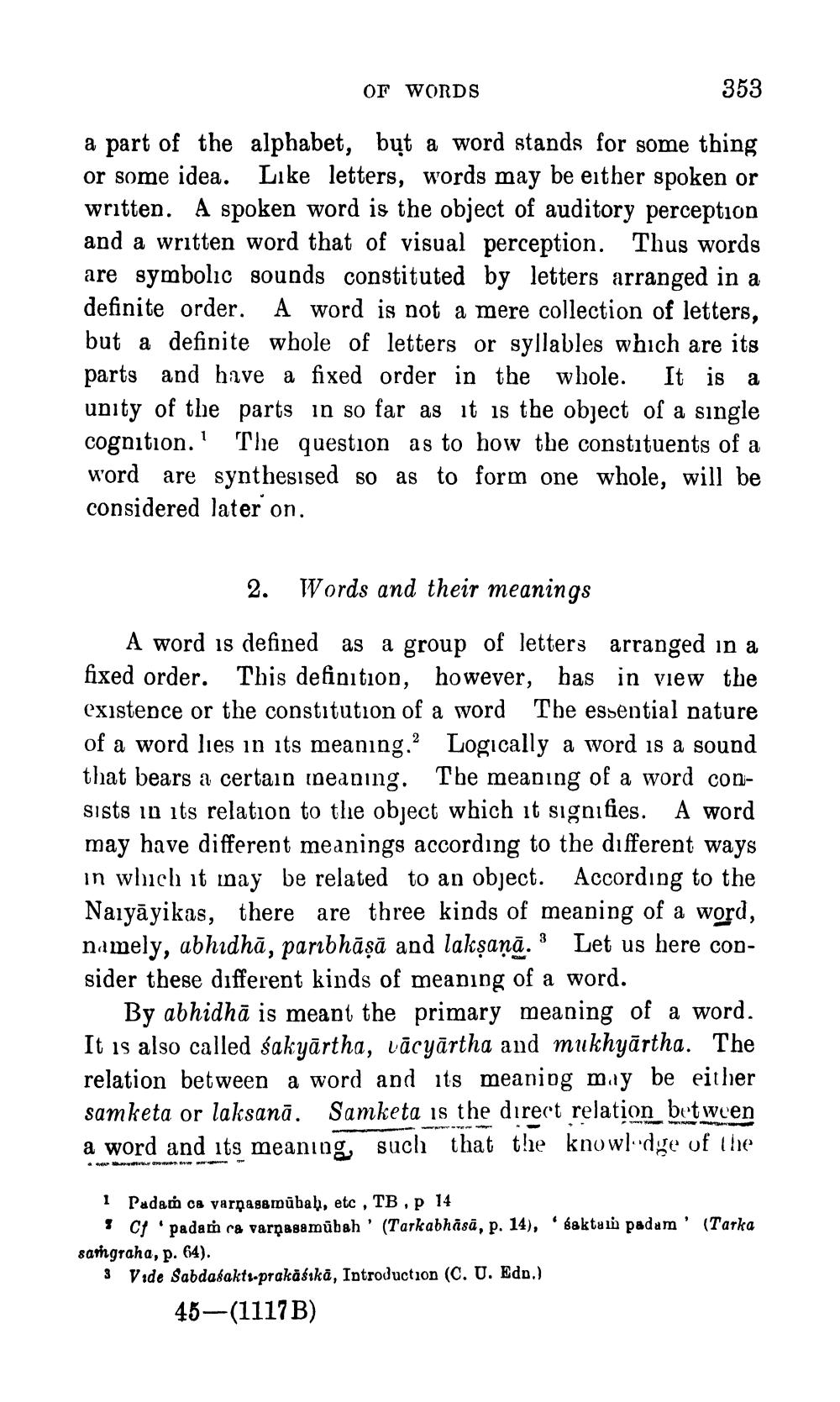________________
OF WORDS
353
a part of the alphabet, bụt a word stands for some thing or some idea. Like letters, words may be either spoken or written. A spoken word is the object of auditory perception and a written word that of visual perception. Thus words are symbolic sounds constituted by letters arranged in a definite order. A word is not a mere collection of letters, but a definite whole of letters or syllables which are its parts and have a fixed order in the whole. It is a unity of the parts in so far as it is the object of a single cognition.' The question as to how the constituents of a word are synthesised so as to form one whole, will be considered later on.
2. Words and their meanings A word is defined as a group of letters arranged in a fixed order. This definition, however, has in view the existence or the constitution of a word The essential nature of a word lies in its meaning. Logically a word is a sound that bears a certain ineaning. The meaning of a word consists in its relation to the object which it signifies. A word may have different meanings according to the different ways in which it may be related to an object. According to the Naiyāyikas, there are three kinds of meaning of a word, namely, abhidhā, paribhāṣā and lakṣaṇā. Let us here consider these different kinds of meaning of a word.
By abhidhā is meant the primary meaning of a word. It is also called sakyārtha, vācyārtha and mukhyārtha. The relation between a word and its meaning may be either samketa or laksanā. Samketa is the direct relation between a word and its meaning, such that the knowledge of the
1 Padam ca varpaga mübah, etc , TB, p 14
3 C padam ca varnagamübah' (Tarkabhäsä, p. 14), "Gaktain padam' (Tarka sangraha, p. 64). 3 Vide Sabdasaktı-prakäśıkā, Introduction (C. U. Edo.)
45—(1117B)




